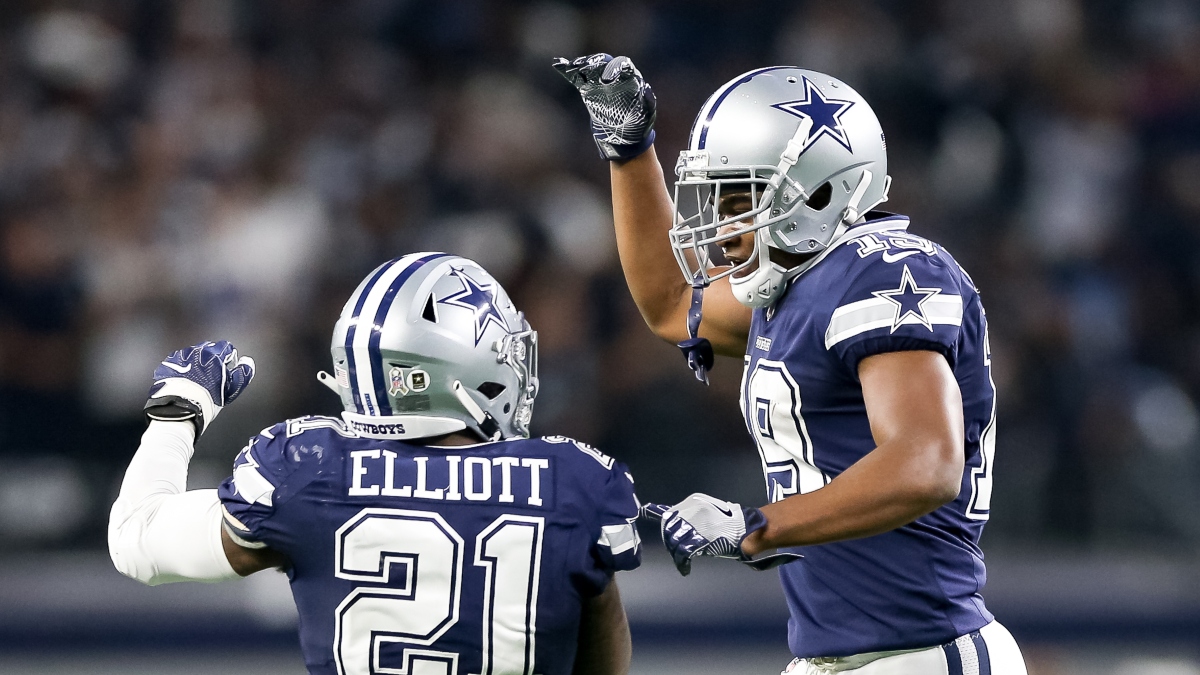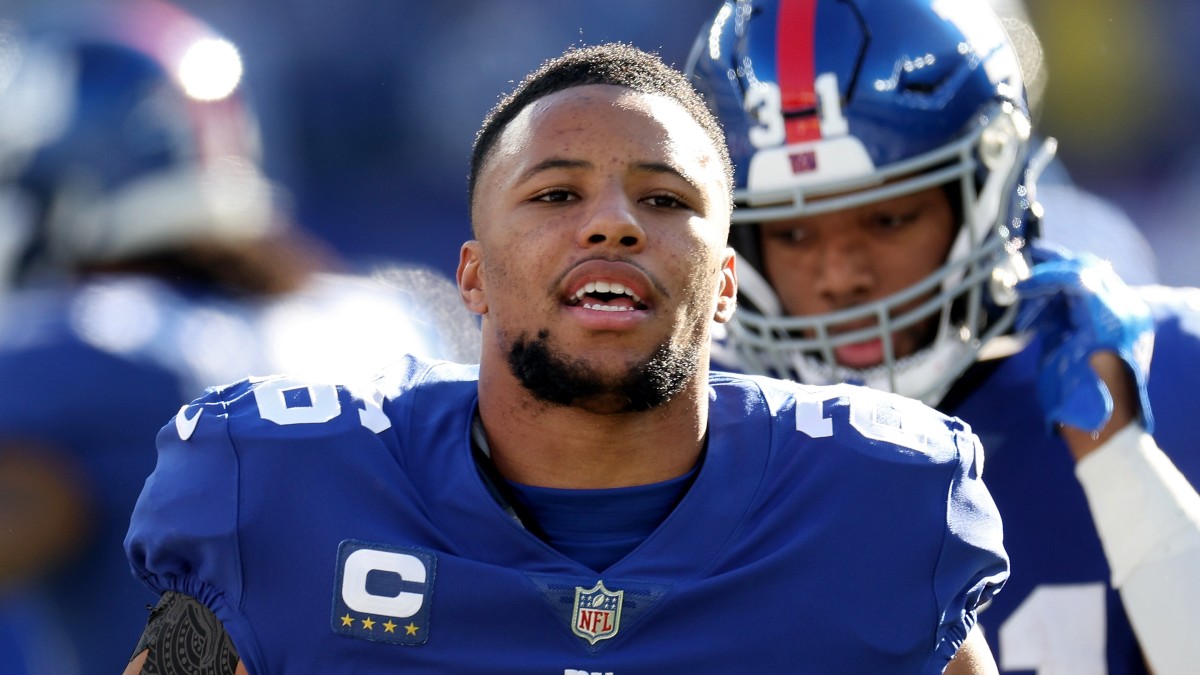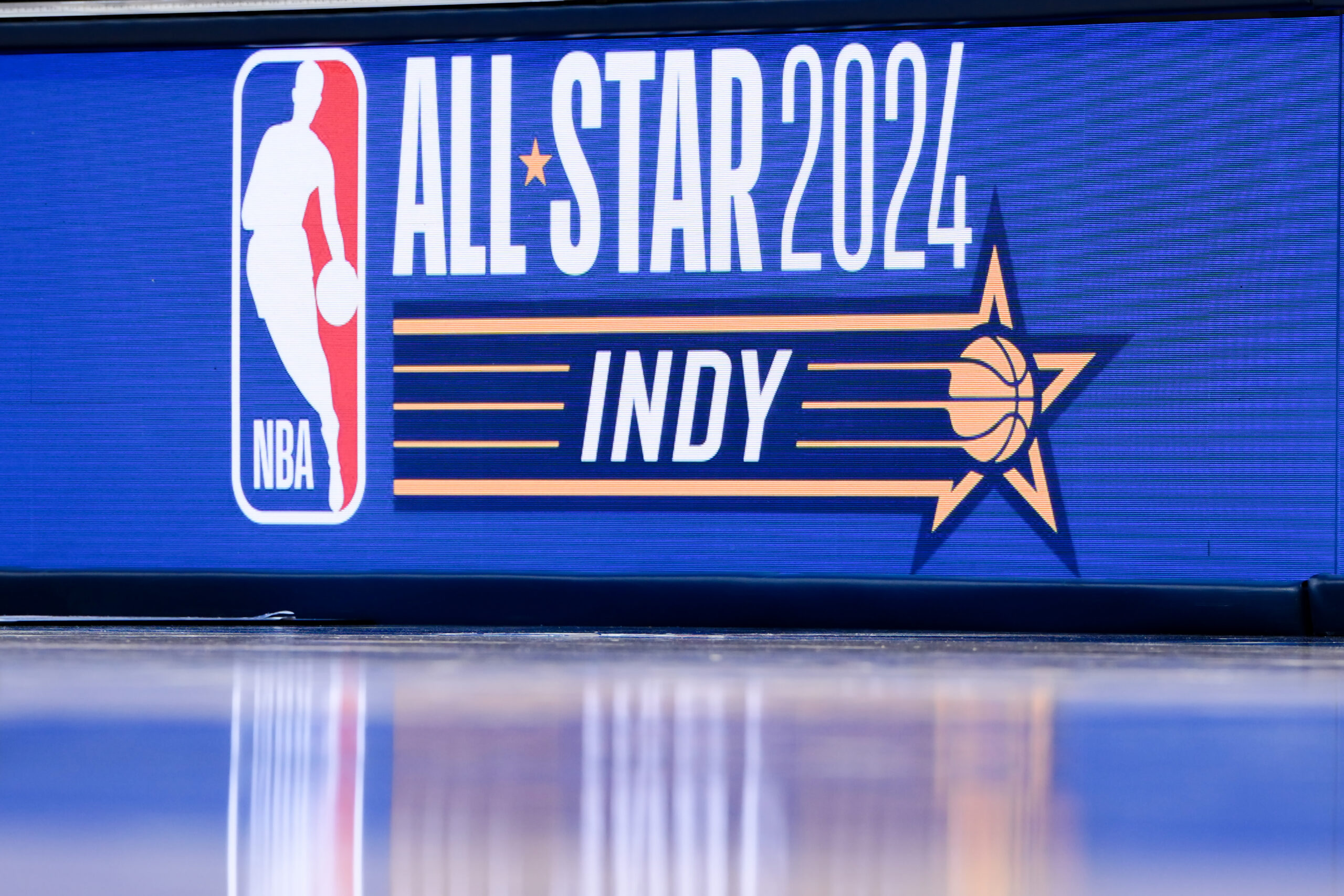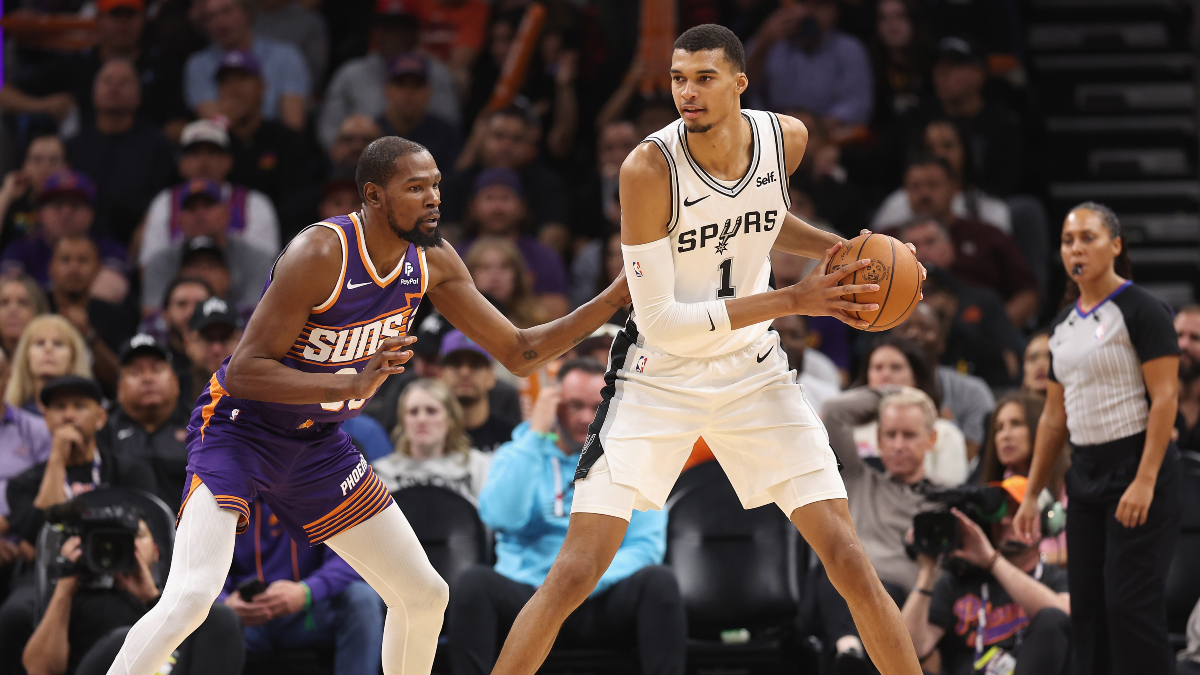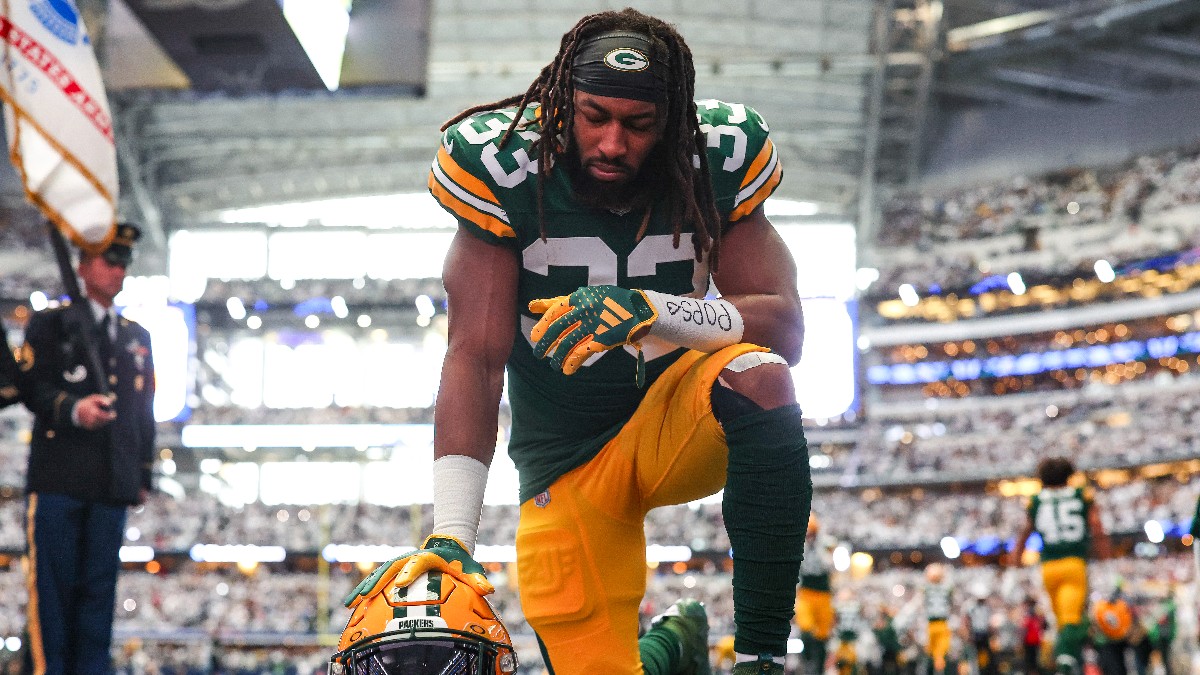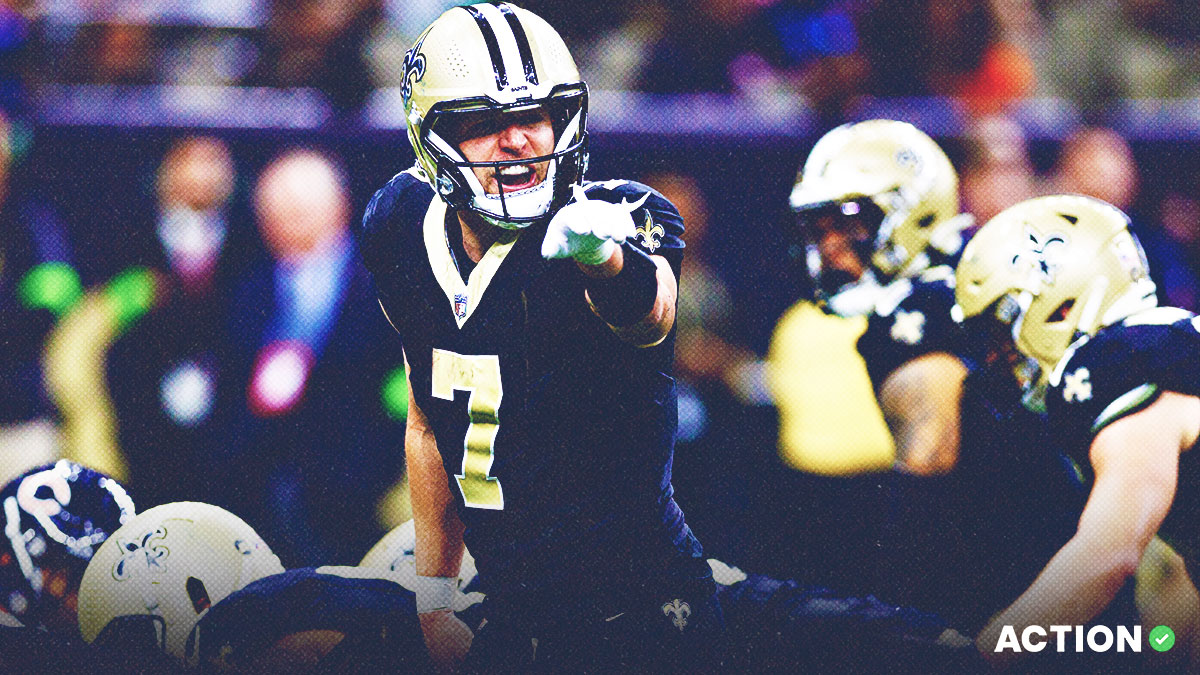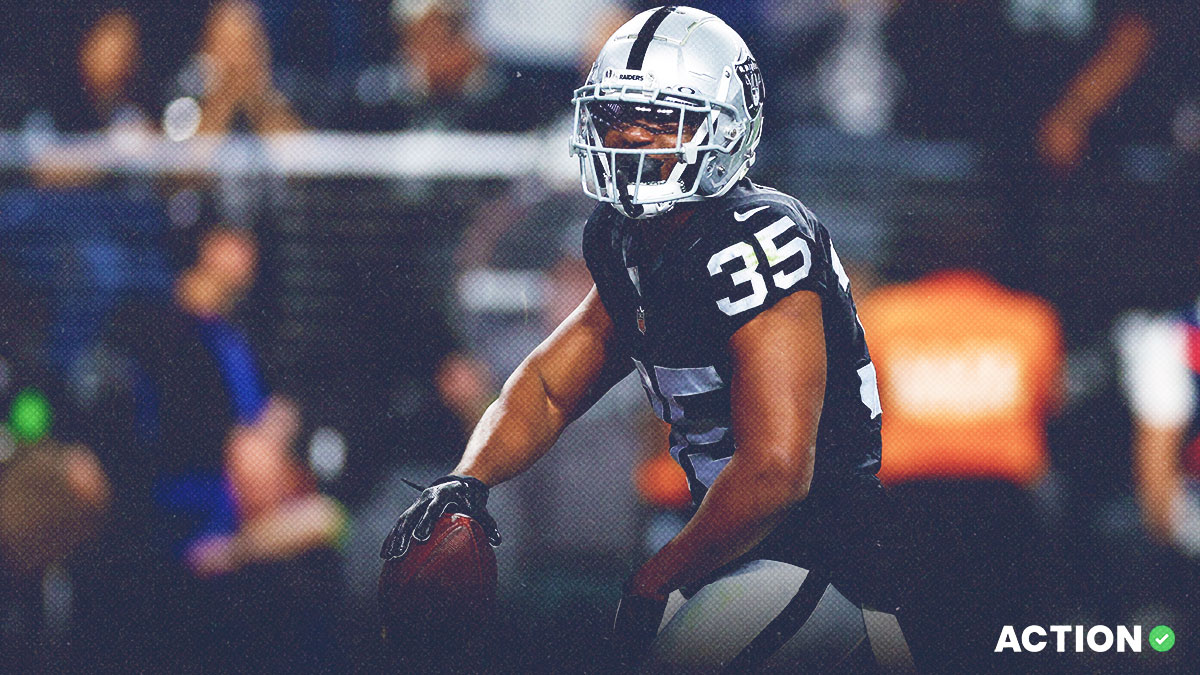- Chris Raybon breaks down the optimal best ball draft strategy for 10- and 12-team leagues.
- He runs through how to attack each position -- the key difference between each league size.
This piece contains a position-by-position strategy guide for 10- and 12-team best ball leagues.
Before we dive into how I'm approaching each position, let's run through a few general strategies I employ across all best ball formats.
Best Ball Strategy Tips
Think 80/20
If you're unfamiliar with the 80/20 rule — or Pareto Principle — it essentially states that roughly 80% of the effects come from 20% of the causes. Pretty much every player of relevance will be drafted, and because rosters auto-optimize, most of their production will even out.
Your job in best ball drafts is to take chances on players who have upside to be an every-week QB1/RB1/WR1/TE1 — the 20% — and nothing less.
What you should not do is take a player because he should have a few decent games — a player who you may have otherwise shied away from in a traditional re-draft league because you wouldn't be able to predict when those games would occur. Literally almost every player who gets snaps will have a decent game at some point — word to Olamide Zaccheaus.
The split is not exactly 80/20, but the spirit of the principle rings true: A very small share of players will account for a large share of big games, and the key to victory is finding the few who can be had in the late rounds. Think players like A.J. Brown, DJ Chark, Terry McLaurin and Dionte Johnson last season. Which brings me to my next point…
Fade Known Quantities
Let’s revisit Brown, Chark, McLaurin and Johnson. Entering last season, it wouldn't have been unreasonable not to view any of them as top-two on their own teams' wide receiver depth charts. But blocking their path to targets were largely known quantities such as Corey Davis and Adam Humphries in Tennessee, Chris Conley and Dede Westbrook in Jacksonville, Paul Richardson and Trey Quinn in Washington, and Donte Moncrief in Pittsburgh.
Novice best ball players may be attracted to what they perceive as guaranteed volume by default, but not only should you fade these types of players, you should gamble on their potential replacements, who are usually lesser-known rookies long on talent and short on established production.
For example, this season, you don’t want Jamison Crowder or Breshad Perriman — you want Denzel Mims. And even though Westbrook, Conley and Keelan Cole may appear to be higher on the depth chart, the only play besides Chark in Jacksonville has to be Leviska Shenault Jr.
The same is true at RB: According to average draft position, Tarik Cohen is going ahead of Zack Moss, Latavius Murray and Alexander Mattison, but Cohen wouldn’t be a 20-touch back even if David Montgomery went down; Moss, Mattison and Murray would if Devin Singletary, Alvin Kamara or Dalvin Cook went down, respectively (or if Cook's holdout drags on).
Most projections and rankings are created using a top-down approach, meaning all of the available carries and targets have to be accounted for by some player or another. PPR and half-PPR scoring systems tend to exacerbate this, excessively rewarding players with these fragile "by default" usage projections.
To uncover a potential league winner, you have to be able to think beyond depth charts and ranking tiers.
Maintain Roster Flexibility Heading Into Final Rounds
You can do this by exercising caution at the one-starter positions.
There’s no singular right way to approach roster construction, but you don’t — for example — want to go into the final few rounds without the option of eschewing a third QB or TE in favor of RB or WR value because you have three of each already. When in doubt, load up on WRs and RBs. And don’t compound what you perceive to be a weak QB or TE depth chart by padding your depth there before you get to the last round — or the last round before you’ll take a kicker or defense — until you know that there aren’t better options available at WR and RB.
Think of it this way — Which is more likely to uplift a team weak at QB or TE: A back-end QB3 or TE3, or a potential top-25 WR or RB?
Or, for instance, if you find yourself in need of a QB3, don’t feel like you have to take a stand, rankings wise, on which QB will start more games. I’d argue that both Ryan Fitzpatrick and Tua Tagovailoa, as well as both of Tyrod Taylor and Justin Herbert, should be selected ahead of both Redskins quarterbacks Dwayne Haskins and Kyle Allen (and probably both Bears quarterbacks, too, although I think Nick Foles will ultimately get the nod over Mitch False-bisky).
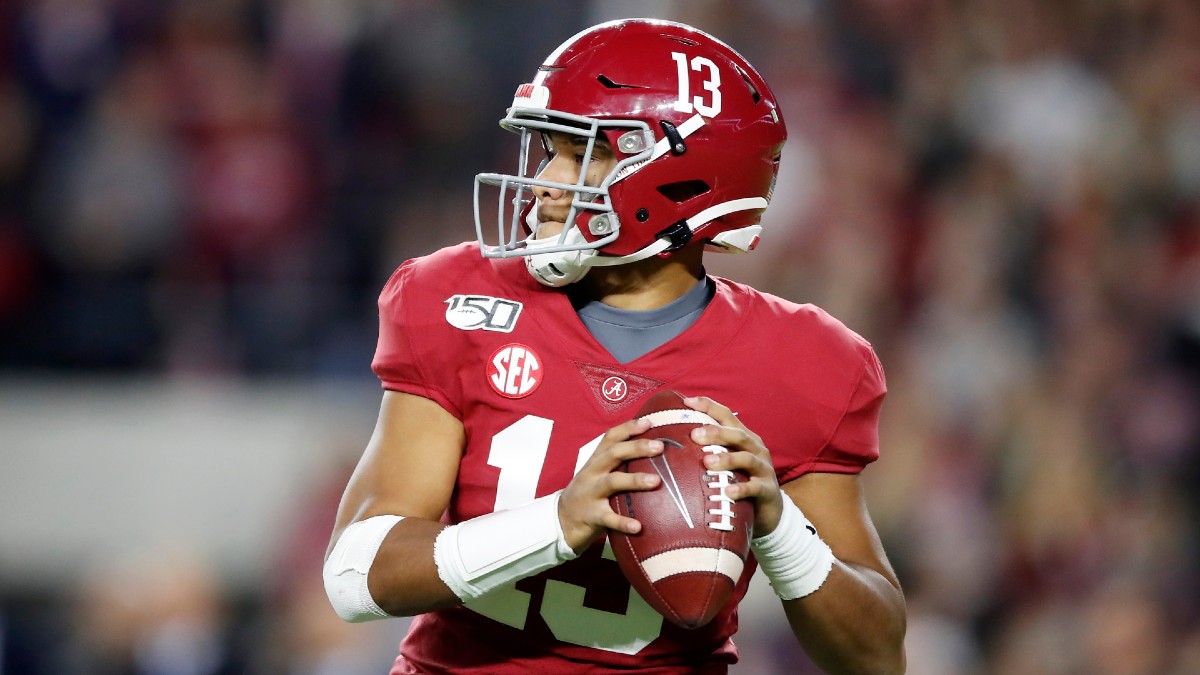
The Later in the Draft, the Less Risk-Averse You Should Be
Best ball inherently lends itself to a riskier draft strategy, but that doesn’t mean taking senseless risks with premium draft capital. For example, even if you love Jonathan Taylor’s upside, it doesn’t make sense to treat him as if he will be the clear backfield leader from Week 1 and take him in Round 4 when there are RBs with more secure workloads like Le’Veon Bell and Devin Singletary still on the board.
As another example, even though I think Tyler Higbee can absolutely pick up where he left off, I'm not going to bet on a player with a five-week track record likely to top out as his team's No. 3 option at the lowest scoring position over locked in No. 1 WR like T.Y. Hilton or Devante Parker.
This concept also applies to injury risk. For example, I would much rather gamble on Will Fuller or A.J. Green in Round 7, when the pool of alpha WRs has thinned out, than I would on Todd Gurley in Rounds 4 or 5, when there are still a host of other RB2 types available (not to mention less-risky WRs with more upside).
Best Ball Quarterback Strategy
In large leagues, you have the biggest incentive to wait on QB. It’s a supply and demand thing: Consider that of the 40 highest-scoring players in half-PPR last season, 25 were QBs — the likes of Jacoby Brissett, Gardner Minshew and Ryan Tannehill all outscored DeAndre Hopkins!
Everybody scores points at QB. So as tempting as it is snag Lamar Jackson, remember that you can still gain a massive edge relative to average draft position (ADP) by finding a top-five QB in the later rounds — as Jackson was last season and Patrick Mahomes was in 2018 — and in a doomsday scenario, you’ll still get way more points than you would at any other position.
In fact, FPPC teams that opened with 3 RBs and 3 pass catchers (either 3 WRs, or 2 WRs and 1 TE) in the first six rounds produced the highest-winning percentages last season.
How to Approach QB in 2020
Do those top FPPC winning percentage configurations change if Patrick Mahomes stays healthy? Perhaps. There is enough WR value that stretches into Round 7 to confidently draft Mahomes, whose ceiling outcome is somewhere in the range of infinity passing touchdowns.
By and large, though, the most sound strategy is to wait until the double-digit rounds before you start thinking QB.
The key attribute to seek when bypassing the top tier is something that all of the top QBs not coincidentally happen to possess: Rushing upside. Scoring at the position outside the top-six or so will largely even out, but rushing ability gives you the best shot at finding yourself on the right side of variance.
For 2020, that means Josh Allen and Daniel Jones are your guys.
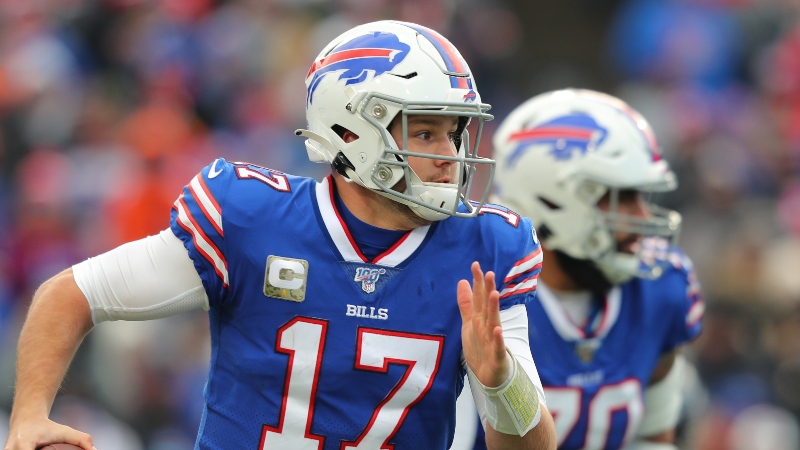
With 17 rushing TDs in 27 career games, including an 8-for-10 conversion rate inside the 5-yard line, Allen sometimes seems more like a wildcat running back masquerading as a starting QB. But the Bills parted ways with a first-round pick for Stefon Diggs, who may fully unlock Allen as a passer. Per Pro Football Focus, Allen threw deep at the sixth-highest rate (14.8%) but ranked 33rd in accuracy (30.8%). He went a respectable 10-of-27 to John Brown, but a combined 3-of-27 to all wide receivers not named John Brown. Enter Diggs, who led all receivers in deep-ball catches (17), yards (676), and TDs (7) in 2019, according to PFF.
Jones averaged 22.8 rushing yards per game as a rookie, scoring twice, but he's already way ahead of Allen as a passer. Despite sitting the first two weeks, Jones finished tied for seventh with five 300-yards passing games. He also had a five-TD game and a pair of four-TD games through the air, and his four games of 28 or more fantasy points tied Deshaun Watson and Russell Wilson for second in the NFL (way) behind Lamar Jackson, who had 9.
Another player to target is Joe Burrow.
No. 1 overall picks have a median finish of QB10 over the past decade, and Burrow was an efficient rusher at LSU whom I could envision putting up early-career Andrew Luck-esque rushing numbers. Burrow also obviously has upside as a passer after putting up the best college passing season of all time, so if Cincinnati’s (n)O-line forces him to scramble, it may just end up enhancing his dual-threat appeal in fantasy.
At the back end of the QB2 ranks, Gardner Minshew and Ryan Tannehill are also in play.
Minshew spent most of his rookie year epitomizing "not bad," but his 27.5 rushing yards per game in 12 starts was actually quite good. Meanwhile, Tannehill sneakily combined 18.4 yards and 0.4 rushing TDs per game with his newfound passing efficiency, and there’s nowhere to go but up from a passing volume perspective.
The Jags traded away Nick Foles and the Titans let Marcus Mariota walk, so both Minshew and Tannehill are unlikely to get benched, which is valuable in this format.
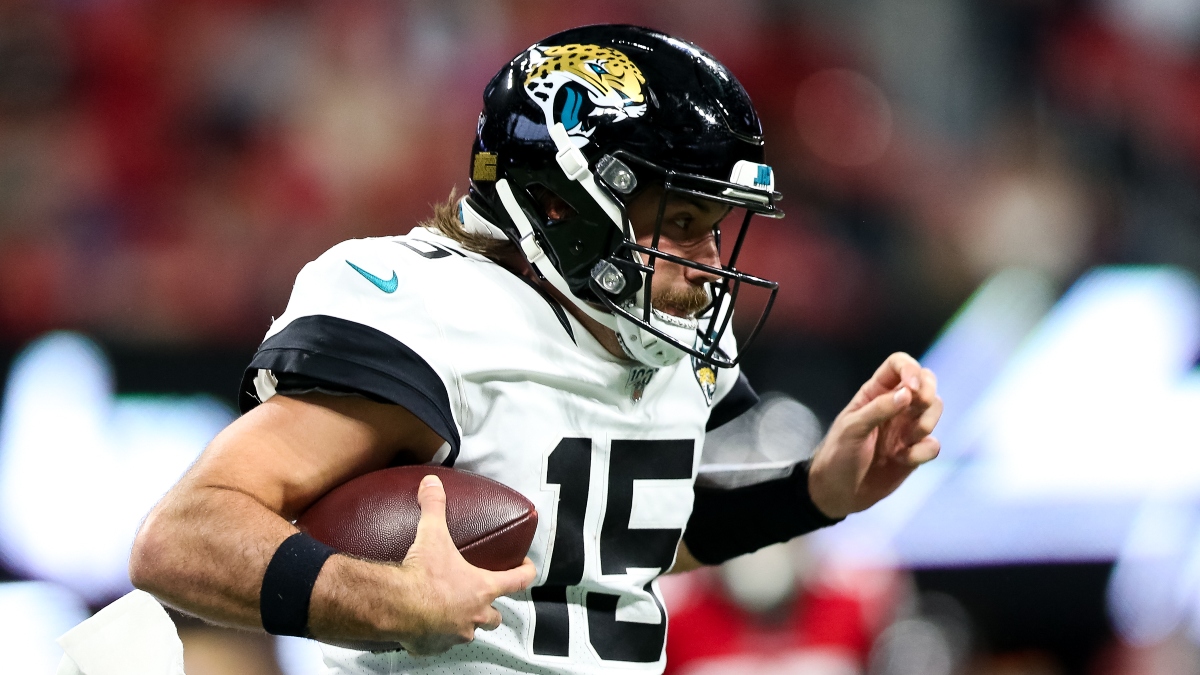
If forced to fill out your roster with pocket passers, the key is to be patient and grab whichever value falls. Drew Brees, Matt Ryan, Carson Wentz, Ben Roethlisberger, Tom Brady, Matthew Stafford, Jared Goff and Aaron Rodgers will all have big games. All make great picks outside the top 10 or 12, but none are worth reaching on. Take whomever falls and keep it moving.
Best Ball Running Back Strategy
A RB cracked the 20 half-PPR threshold 113 times in 2019, with nearly half of those games coming courtesy of nine RBs:
- Christian McCaffrey: 11
- Dalvin Cook, Derrick Henry: 7
- Aaron Jones: 6
- Austin Ekeler, Ezekiel Elliott, Mark Ingram: 5
- Saquon Barkley, Nick Chubb: 4
Even with this format's auto-optimizing lineups, I don't recommend taking a quantity-over-quality approach at RB. Locking in top backs with high-ceiling/floor combos early unlocks your ability to target high-volume pass catchers rather than mediocre backs as the middle rounds progress.
The conventional wisdom is that you can never have enough RBs, but that doesn't necessarily apply in best ball — at least not to the extent that it's optimal to stockpile RBs in the middle rounds.
There tends to be a larger drop-off from the top tier to mid-tier at RB than there is at WR. You also don’t have the option of leveraging an excess supply of RBs as trade chips like you would in the regular season. Additionally, many of the RB3/FLEX types available in the middle rounds are not ideal in this format because they have shaky job security.
On top of that, even many of the RB2s pose far greater risk than options at other positions.
For instance, this season, Todd Gurley has more red flags than healthy knees. David Johnson is suddenly 29 and looked slow last year. Melvin Gordon has some sleeper appeal reminiscent of 2016 DeMarco Murray in his first year with the Titans, but there's still a lot of uncertainty there. Raheem Mostert has an outside shot at leading the league in rushing TDs, but he is a career special team at who has never topped 772 yards in a season and remains subject to Kyle Shanahan’s whims.

The Steelers went from a using one bell-cow back to rotating in 4-5 once James Conner’s durability started failing him, and there have been whispers about lightening his workload. And even though Le’Veon Bell has fallen too far — his ADP is RB20 as of this writing — he has to contend with Adam Gase’s most prized antique, Frank Gore, who can only be viewed as a value suck.
That’s not to suggest you don’t need depth at RB — the position is the most likely to miss games — but you should be sure to target RBs who project to trend upward as the season progresses. You don’t want to find yourself in a position where you’re using prime draft capital on players fragile situations.
How to Approach RB in 2020
Again, it makes sense to pay a premium for locked-in stud production early so you don’t have to cobble together a committee of RBs whose value may decrease as the season wears on.
In this format, you don’t want players like Damien Williams, Mark Ingram, Marlon Mack or Kerryon Johnson — you want Clyde Edwards-Helaire, J.K. Dobbins, Jonathan Taylor, and DeAndre Swift, respectively. (Ronald Jones also falls into this category, but I’m skeptical of Ke’Shawn Vaughn. If Jones falls outside the top-30, I would be more inclined to view him as the undervalued lottery ticket than Vaughn.)
The issue is rookie RB ADP is aggressive this season.
I definitely want exposure to Edwards-Helaire, but I am not thrilled about having to pay the the inflated price of RB14 (Williams is RB32). Taylor's ADP is way too high at RB17 (Mack is RB33). Cam Akers is going as the RB25, Swift, the RB26 (Johnson is RB36), and Dobbins the RB29 (Ingram is RB27).
It's generally a good idea to target rookie RBs, especially in this format, but the market has drained a good amount of the value, especially relative to the alternatives available at WR at those ADPs.
That said, there is a case to be made for more deliberately targeting the rookie backs as part of a Zero RB strategy, but keep in mind the odds are against this fully paying off without pairing them with at least one established RB.
Over the past five seasons, RBs drafted in Rounds 2-3 have averaged 713 scrimmage yards and 4.1 TDs in Year 1, touching the ball 10.3 times per game. Roughly one-in-four (26.9%) have cracked 1,000 yards, and the same amount have posted at least six TDs. There's likely at least one lottery ticket among Swift, Taylor, Dobbins, Vaughn and Akers, but expectations have to be tempered.
The aggressive ADPs of the rookie backs has created a few spots for value, namely Devin Singletary (RB23) and David Montgomery (RB28). Both are talented second-year backs who project as clear leaders of their team’s respective backfields. Singletary averaged 18.9 touches per game over his last nine (including Buffalo’s playoff loss to Houston), and Montgomery averaged 18.5 touches over Chicago’s final 10 games.
Speaking of Singletary, his backup — Zack Moss — is a nice way to play the Day 2 rookie RB lottery at a discount. Moss, Buffalo’s third-round pick, averaged 6.0 yards per carry and scored 29 TDs in 22 games in his final two seasons at Utah. He figures to immediately inherit the role that Gore occupied last season and would likely be featured if Singletary were to go down.
Even if not, it wouldn’t be surprising if Moss beat his RB46 ADP.
Best Ball Wide Receiver Strategy
Sixty-two different WRs had at least one 20-point half-PPR performance in 2019, but only 17 WRs accomplished the feat more than twice. There were 126 such games in total, and nearly one-third came from the same eight players:
- Michael Thomas: 8
- Chris Godwin, Julio Jones, Kenny Golladay, A.J. Brown: 5
- Tyreek Hill, Deandre Hopkins, Cooper Kupp: 4
On a per-game basis, they averaged a 32% share of their team’s air yards and a 24% share of targets, according to AirYards.com. Godwin (24%) and Kupp (21%) are the only players with a sub-25% air-yard share.

The next tier (WRs with three 20-point games) fit a similar profile::
- Terry McLaurin (41% air, 22% tar)
- Mike Evans (35% air, 23% tar)
- DJ Chark (33% air, 21% tar)
- Julian Edelman (30% air, 25% tar)
- Jarvis Landry (29% air, 26% tar)
- Tyler Lockett (28% air, 21% tar)
- Emmanuel Sanders (27% air, 19% tar)
- Amari Cooper (26% air, 20% tar)
- Robert Woods (25% air, 23% tar)
If you’re counting at home, that’s 15-of-17 WRs with at least a 25% air-yard share. It’s imperative to target these types of WRs with 25% plus air yards and 20% plus target share potential, even in full- PPR formats like FPPC and FanBall.
The high market share percentages are crucial for your team’s ceiling; volume among the majority of WRs will largely even out, but invariably, every NFL team will have at least a handful of games where they have to pass a ton, which gives the top options even poor and/or low-volume pass offenses the chance to have monster games.
How to Approach WR in 2020
Employing a strategy of targeting stud RBs early requires finding WR1 upside outside the WR1 ranks. Luckily, there are countless WRs going outside the top 12 capable of returning WR1 value.
Keep in mind that a WR doesn’t necessarily even need to finish top-12 to produce similar value to those who do; it’s all about high-upside games, and it’s very possible for a roster filled with four to six WRs from the early to middle rounds to outperform one with a top-heavy WR corps.
WRs To Target In Best Ball
Adam Thielen, Vikings: Going on 30 and coming off a thoroughly disappointing 30 catches in 10 games, Thielen is easy to write off as slowing down. But it’s probably better to write off 2019 as a lost season and expect a major rebound.
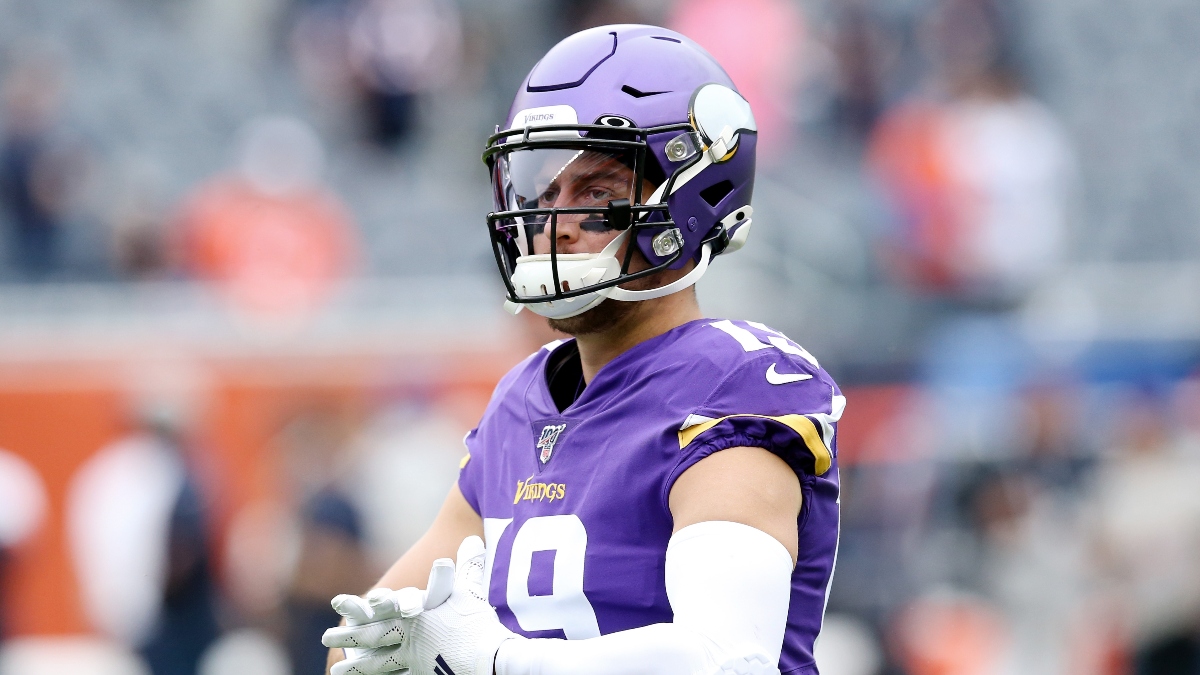
Thielen’s per-game numbers were even uglier because injuries limited him to snap rates of 12%, 10% and 51% in three of his last four regular-season games, and the fourth was a zero-catch outing in the Kirk Cousins Green Bay debacle of Week 16 (not to be confused with the Kirk Cousins Green Bay debacle of Week 2).
But Thielen still scored seven TDs in seven healthy games during the regular season, and rebounded from his lost second half to catch 12 passes for 178 yards in two postseason games. And despite the injury struggles, he graded out 22nd of 102 qualifying wide receivers in PFF’s receiving grades — just two spots below Stefon Diggs.
With Diggs now in Buffalo, Thielen's upper range of outcomes includes something similar to his torrid start to 2018, when he began the season with eight straight six-plus-catch, 100-plus-yard games — six of which included TDs.
Calvin Ridley, Falcons: Julio Jones and Todd Gurley have more name value, but I’m probably going to have Ridley and/or Hayden Hurst on all of my best ball teams.
Ridley improved from a 17% air-yard share and 15% target share as a rookie in 2018 to a 27% air-yard share and 17% target share in Year 2. Those figures bumped up even more after the Mohamed Sanu trade, with Ridley commanding 31% of the air yards and 19% of the targets.
Courtland Sutton, Broncos: Long-term, Sutton’s market share percentages figure to take a hit as rookie wideouts Jerry Jeudy and KJ Hamler develop — not to mention second-year Noah Fant — but in the short term, this is still a player who tied for the league lead with a 41% air yard share last season.
After an abbreviated offseason, second-year signal caller Drew Lock figures to continue to rely on Sutton, who defenses won’t be able to zero in on quite as much.
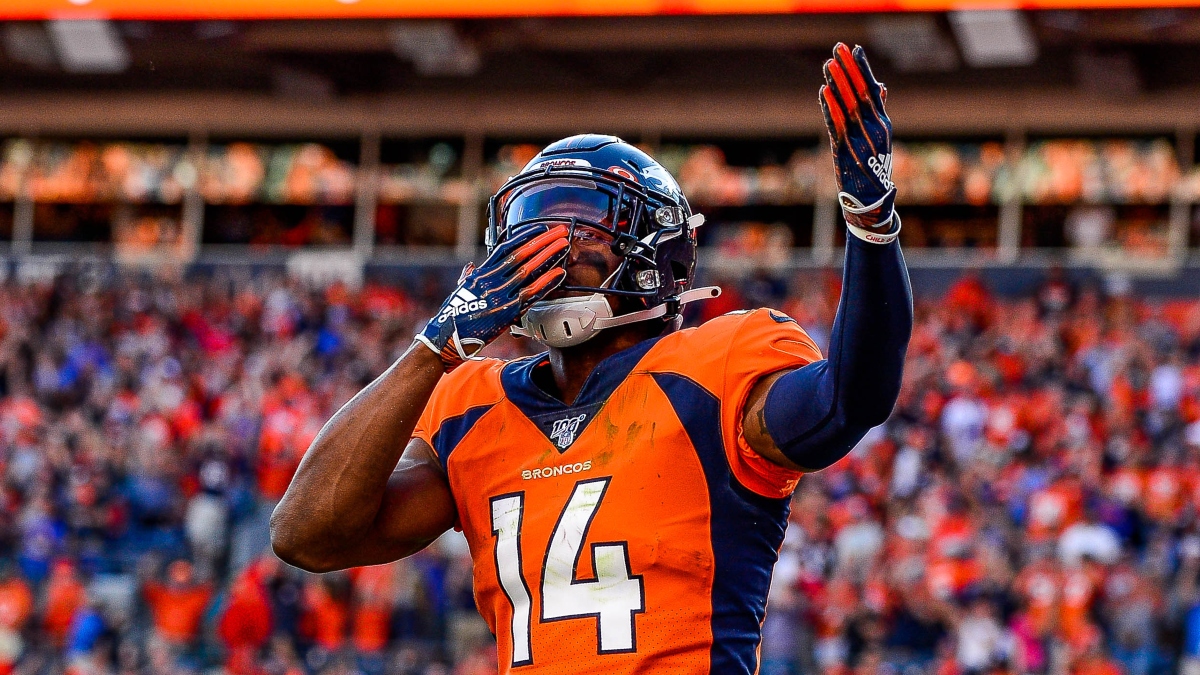
T.Y. Hilton, Colts: Hilton may be a bit nerve-wracking after coming off a season in which he missed six games and was a part-time participant in four others. But entering a contract year with a clean bill of health and an upgrade at quarterback in Philip Rivers, Hilton has top-10 upside.
Rivers targeted Keenan Allen incessantly, and even in a down year in 2019, Hilton’s air yard and target shares stood strong at 32% and 23%, respectively. Hilton is in a Thielen-like situation but is going at WR28 compared to Thielen’s WR16.
Devante Parker, Dolphins: I’d be remiss if I didn’t mention (nitpick?) some of Parker’s red flags.
The Dolphins dropped back a whopping 713 times last season, the third-most, and Parker thrived off that volume despite being targeted less on a per-route basis (20%) than Preston Williams (23%), Jakeem Grant (22%) and Isaiah Ford (24%) while being matched by Albert Wilson (20%). And according to AirYards.com, Parker's RACR — which measures the ratio at which a receiver converts air yards to actual receiving yards — was similarly pedestrian at 0.67, the lowest figure among WRs who finished top-10 in yardage last season.
And as far as labeling his year-by-year production, bust still has a 4-1 edge on breakout.
That said, Parker’s breakout did occur under a new coaching regime, and at 27, he’s squarely in what are considered the peak years for a WR. Most importantly, there’s no imminent threat to his 33% air-yard share from a season ago. And with a wide receiving corps made up mostly of players who are either hurt (Williams), replacement level (Allen Hurns), or subsist largely on gadgetry (Grant, rookie seventh-rounder Malcolm Perry and, to a certain extent, Wilson), Parker’s 21% target share from a season ago actually has room to grow.
Parker’s ADP is WR24, and he’s often available in the sixth round.
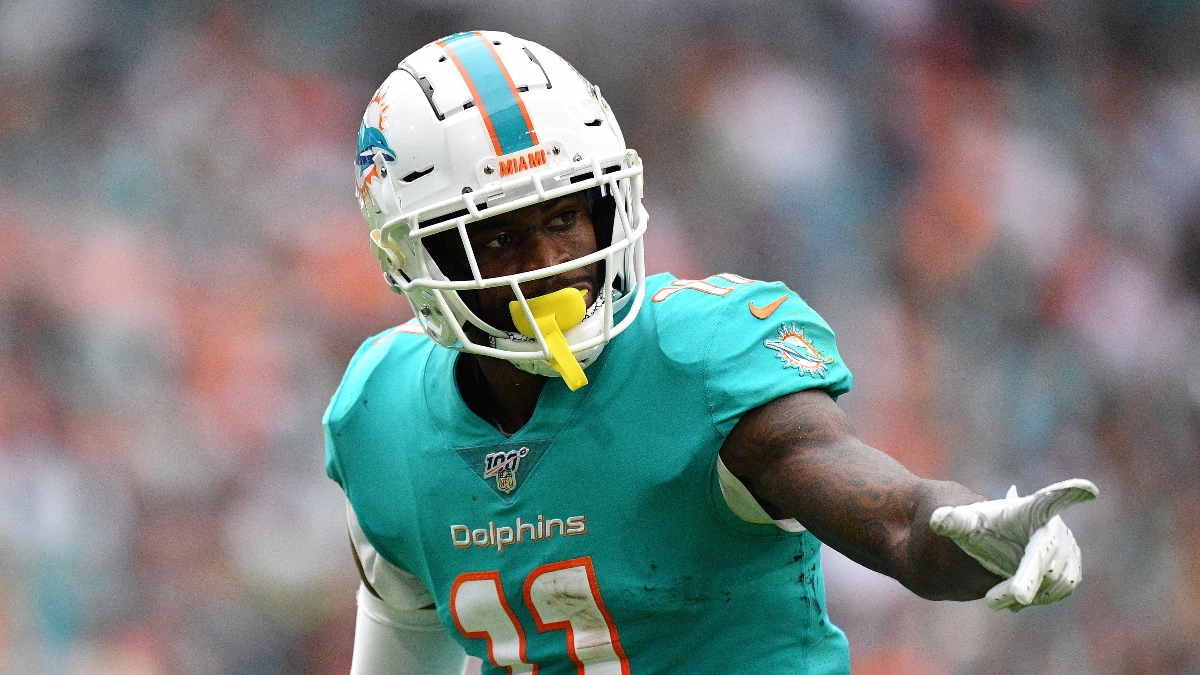
Marquise Brown, Ravens: The Ravens have nowhere to go but up from a pass attempt perspective after spending most of 2019 blowing teams out: They attempted an NFL-low 440 passes in 2019. Lamar Jackson has also said he will run less.
In terms of the pass-catching pecking order, there’s a gaping chasm between Mark Andrews, Brown and everyone else. And despite playing only 58% of the snaps as a rookie while battling injuries as a rookie, Brown’s per-game share of air yards (23%) and targets (18%) were already on the cusp.
Brown is a great get at his WR33 ADP.
Deebo Samuel, 49ers: Samuel posted a promising 20% air yard share and 18% target share as a rookie, which improved to 22% and 20%, respectively from Week 10 on.
With Emmanuel Sanders gone, there’s a major drop-off from Kittle and Samuel to everyone else. And even if Samuel remains on the low end of the thresholds, he can make it up on the ground. Samuel didn’t fail to record at least one carry over his final eight regular and postseason games, rushing 15 times for 224 yards — good for an absurd 14.9 yards per carry — and two TDs over that span.
With an ADP of WR27 (74th overall), he often lasts until the seventh round.
Will Fuller, Texans (high risk): Fuller is made up of soft tissue that couldn’t withstand a sneeze, but this is the type of player you take a risk on outside the top 30 WRs (his current ADP is WR34).
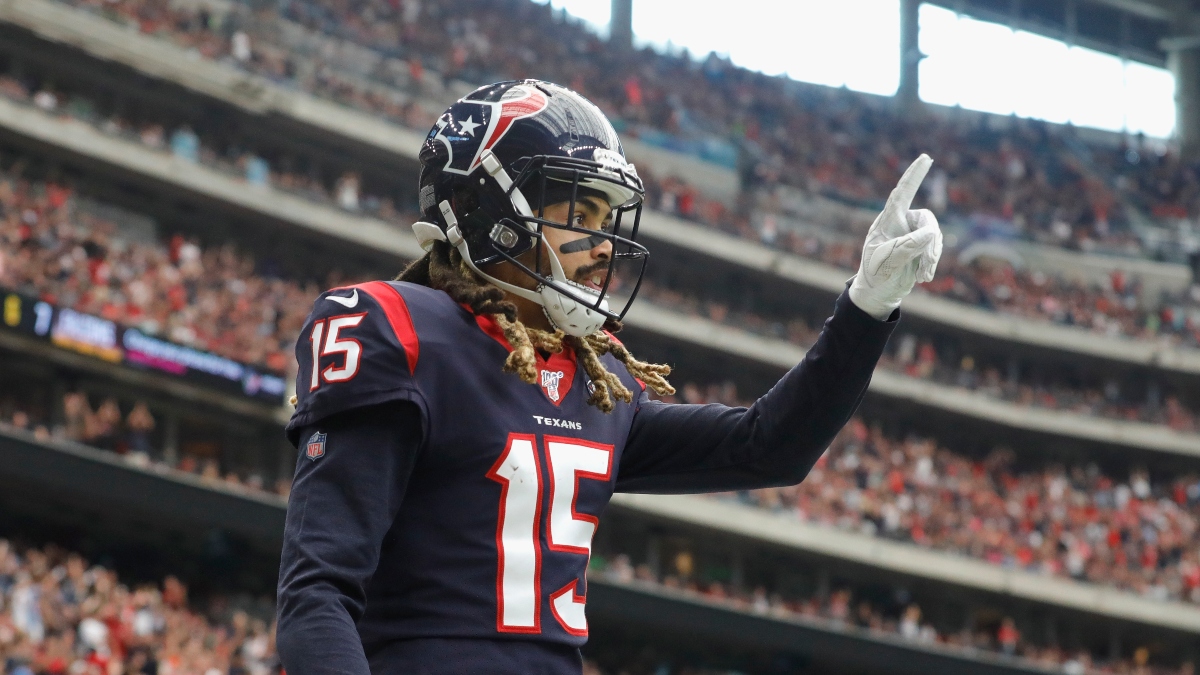
Even with Hopkins in the fold last season, Fuller maintained a 26% share of air yards and 19% share of targets. His average depth of target last year was 14.0 and hasn’t dipped under 13.8 since Watson arrived on the scene.
If healthy — which is a colossal-sized "if" — Fuller will rampage through helpless secondaries and threaten for the league lead in air yards as Watson’s top target. If Fuller misses time, Brandin Cooks inherits a poor-man’s version of this upside — Watson is no Jared Goff.
A.J. Green, Bengals (high risk): Remember him? In case you forgot, he’s the guy who has never averaged fewer than 37% of his team’s air yards and 23% of it’s targets on a per-game basis in any season.
I was all the way out on Green heading into last season, but a year off and a new quarterback could make all the difference. Assuming Green signs his franchise tender, he’s a sneaky-good bet for Comeback Player of the Year at 14-1 at DraftKings [bet now].
From jump, Joe Burrow could very well be the best quarterback Green has ever had.
High-Upside Sleepers
Here are some more WRs to target as high-upside sleepers and values outside the top 40:
Henry Ruggs III, Raiders: Assuming Ruggs is healthy after injuring his leg, he’s a good bet to slide in as the No. 1 receiver, which afford Tyrell Williams a healthy 32% air-yard share last season. Darren Waller’s aDOT was only 7.3 last year, so Ruggs should be able to get his even if Waller continues to be used in the same manner.
Michael Pittman Jr., Colts: Even with Hilton locked in the lead role, there’s the potential for separation between the team’s No. 2 and everyone else: Parris Campbell lacks refined route-running skills, Jack Doyle will spend part of his time blocking and won’t take up many air yards even if he gets a decent amount of targets (his average depth of target has never cracked 7 yards), and Zach Pascal is a No. 4 wide receiver type.
Even with Keenan Allen commanding 30% of Rivers’ air yards last season, Mike Williams found his way to a team-leading 34%, and Pittman has similar upside.
Sammy Watkins, Chiefs: Watkins probably won’t approach the 22% air-yard share and 19% target share from last season, but he’s at least capable of doing so in the event of an injury to Tyreek Hill or Travis Kelce.
Watkins has also become the cheapest way to invest in Patrick Mahomes, save for Demarcus Robinson, who will probably be plastered to the bench for most of 2020.
Denzel Mims, Jets: Mims is 6-foot-3, 207 pounds and runs a 4.38 forty. He also possesses a 95th-percentile catch radius, and his closest comp is Chris Godwin, according to PlayerProfiler. It's not hard to envision Mims leading the Jets in targets and air yards this season.
Laviska Shenault Jr., Jaguars: A first-round talent who dropped into Round 2 after an injury impacted his combine performance, Shenault could easily earn the No. 2 wide receiver role in Jacksonville. The 6-foot-1, 227-pounder can also line up as a running back and is the type of all-around playmaker who offenses scheme the ball to.
Do Not Draft
Here are some WRs to avoid in the later rounds whom you may otherwise not have thought twice about selecting:
Sterling Shepard & Golden Tate, Giants: These guys and Evan Engram were rarely healthy at the same time, but at full strength, the Giants have five players — Shepard, Tate, Engram, Darius Slayton and Saquon Barkley — who can all command a 20% or more target share in a given game, making it difficult for two low aDOT guys such as Shepard and Tate to truly differentiate.
Year 2 breakout candidate like Slayton to be a true differentiator.
Jamison Crowder & Breshad Perriman, Jets: Crowder will get the targets but not the air yards; Perriman will get the air yards but not the targets. All will have to compete with a high-volume pass catching back in Le’Veon Bell, as well as two TEs in team wants to involve in Chris Herndon and Ryan Griffin.
I'd be more interested in Perriman if the Jets hadn't drafted Mims in Round 2. I'm not putting too much stock into Perriman's mini-breakout — it's not hard to post big numbers with Jameis Winston chucking the ball to everybody on both teams, and Mike Evans and Chris Godwin going down and leaving the team's entire air-yard share vacated. We're also talking about the same Perriman who caught 11-of-32 targets for 139 yards and one TD in his first nine games last season and owns a sub-50% career catch rate.
If you're going to throw a dart on this team, fade the known quantity and target Mims' untapped potential instead.
Robby Anderson & Curtis Samuel, Panthers: Anderson's deep-ball prowess is a poor fit for Teddy Bridgewater's underneath tendencies. Samuel managed to command a 30% air yard share last season, but did absolutely nothing with it before the new coaching staff promptly went out and signed Anderson for that role. Perhaps he will more effective in an underneath-type role.
Both are perfect examples of players who will have a couple good games but lack true WR1 upside.
Allen Lazard, Packers: Upon taking over as a regular in Week 7, Lazard commanded a modest 21% air yard share and 13% target share before sleep walking through the two postseason games with three catches for 36 yards on 47 routes. It’s also not a great sign for the 6-foot-5, 227-pound Lazard that the one wide receiver of note the Packers added to the mix this offseason was the similarly big bodied Devin Funchess. Lazard is more of a core special teamer/WR4/5-type miscast as a starter (for now).
Even if Davante Adams were to go down, Lazard would struggle mightily as the focal point of the opposing defense. He has no business going at his WR63 ADP.
Dede Westbrook, Jaguars: Westbrook's aDOT has fallen from 12.3 to 8.5 to 6.6 over the past three years, which saps his fantasy upside even if he continues to catch four balls per game.
Best Ball Tight End Strategy
On only 26 occasions did a TE crack the 20-point mark in half-PPR a season ago, with 50% of those games came from just five players: Mark Andrews (4), Zach Ertz (3), Evan Engram (2), Austin Hooper (2), and Darren Waller (2).
In full PPR, Travis Kelce led the way with five 20-point games, followed by Andrews with four, and a host of players — Ertz, Waller, Hooper, George Kittle, Tyler Higbee and Jared Cook — with three. Those eight combined to account for 59% of all 20-point PPR games registered by the position; Engram, Ryan Griffin, and Noah Fant were the only other TEs with more than one.
Still, the spread of big games is relatively flat among the top-10 TEs, which leads to the following takeaways:
- The value of stud TEs lies in their floors, they’re still giving you an outsize share of the production at the position.
- The biggest edge is not simply having a stud, but pairing a stud with another top-10 option. The conventional wisdom is to deemphasize the position if you grab a stud early, but by landing two top options, you may find yourself controlling a quarter or more of the position’s top scores on the season. This rings even more true in FPPC, where TEs are awarded 1.5 points per reception.
- If you miss out on one of the stars, landing two low-end TE1s is key. If not, you’ll have no shot at measuring up.
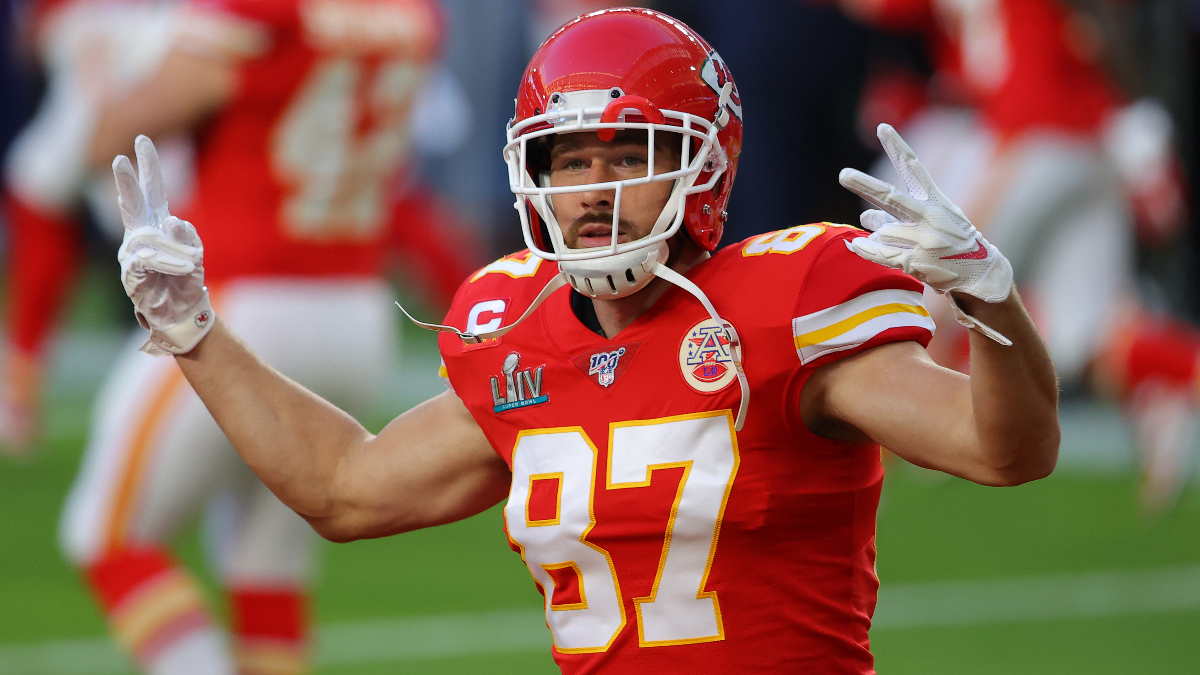
How to Approach TE in 2020
Travis Kelce, George Kittle, Mark Andrews and Zach Ertz are entrenched as the top four. Things get a bit dicey after that.
Evan Engram has a lot of competition for targets, Darren Waller could see less volume with Henry Ruggs in the fold, Tyler Higbee was a fantasy non-factor for four-and-a-half years before his five-game eruption to close out 2019, and Jared Cook salvaged a subpar target count (65) with nine TDs. Still, they make up much of the second tier of TE1s who can provide but don’t necessitate passing on a potential alpha WR in the middle rounds.
The top player I’m targeting in that regard is Hayden Hurst — he stands out as the TE with the clearest path to high-end volume.
Austin Hooper ran a route on 80% of Falcons dropbacks per game last season en route to an 18% target share and 5.8 catches per game. The Falcons traded a second-rounder for Hurst, who blocked on only 1.9% of pass snaps with Baltimore last season, according to PFF. That makes it pretty clear the Falcons have a Hooper-like role in mind for Hurst, who could end up being this year’s Waller.
In fact, I prefer Hurst even to Hooper himself.
In what could be a low-volume Browns pass offense — new head coach Kevin Stefanski coordinated a Vikings offense that attempted just 466 passes last season, third-fewest — Hooper could post similar market share numbers behind Odell Beckham Jr. and Jarvis Landry and still fall off in a major way. The Falcons offense he’s coming from had 218 more pass attempts than Stefanski’s Vikings last season.
I also prefer Hurst to players like Rob Gronkowski, Noah Fant and T.J. Hockenson, who also have ceilings in terms of reception volume.
As far as TE2 types, one way down the board that stands out is Eric Ebron, who is currently being drafted as the TE21. In that range, you’re looking for the rare late-round TE who can give you more than one or two big games over the course of the season. Ebron is a year removed from a 13-TD season and joins a Steelers offense that led the NFL with 689 pass attempts in 2018 with a healthy Ben Roethlisberger.
Chris Raybon is a Senior Editor at the Action Network and finished No. 4 overall in FantasyPros' weekly rankings accuracy contest. He has watched every snap of every NFL game since 2010 — even the kneel downs. Follow him on Twitter @ChrisRaybon and read about how he quit his accounting job and got paid to watch sports.


